Published Sep 16, 2024
Federation Foes: The Dominion and Emerald Chain
Let's examine both galactic group's leadership, goals, structure, and tactics.

StarTrek.com
Separated by 800 years of history, the Federation's conflicts with the Dominion and Emerald Chain represented two monumental hurdles in the interstellar coalition's desire to peacefully explore the galaxy.
when its influence and membership were already strong, while the Emerald Chain opposed a post-Burn Federation whose capabilities and reputation had been significantly diminished. Nevertheless, a simultaneous examination of the Dominion and Emerald Chain's leadership, goals, structure, and tactics would surely lead to fascinating insights into each galactic power, so let's dive right in!
Positions of Leadership
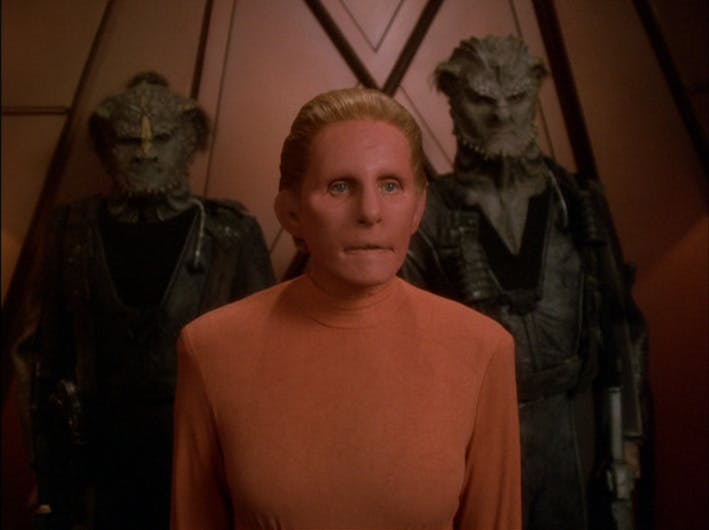
"Treachery, Faith and the Great River"
StarTrek.com
Probably the most drastic divergence between the Dominion and Emerald Chain, the leaders of each organization came from vastly different backgrounds. , the shapeshifting lifeforms who controlled the Dominion, were considered to be gods by their subordinates and held absolute sway in the Dominion's affairs, yet they proved more interested in connecting with one another via the Great Link than dealing with monoform species, who they termed "solids." Even the Female Changeling, the Founder who became the face of her people during the Dominion War, preferred to leave political and strategic details to the Vorta. Another feature unique to the Great Link was that the Founders considered themselves to be individuals and a single consciousness, depending on what form they had assumed at the time.
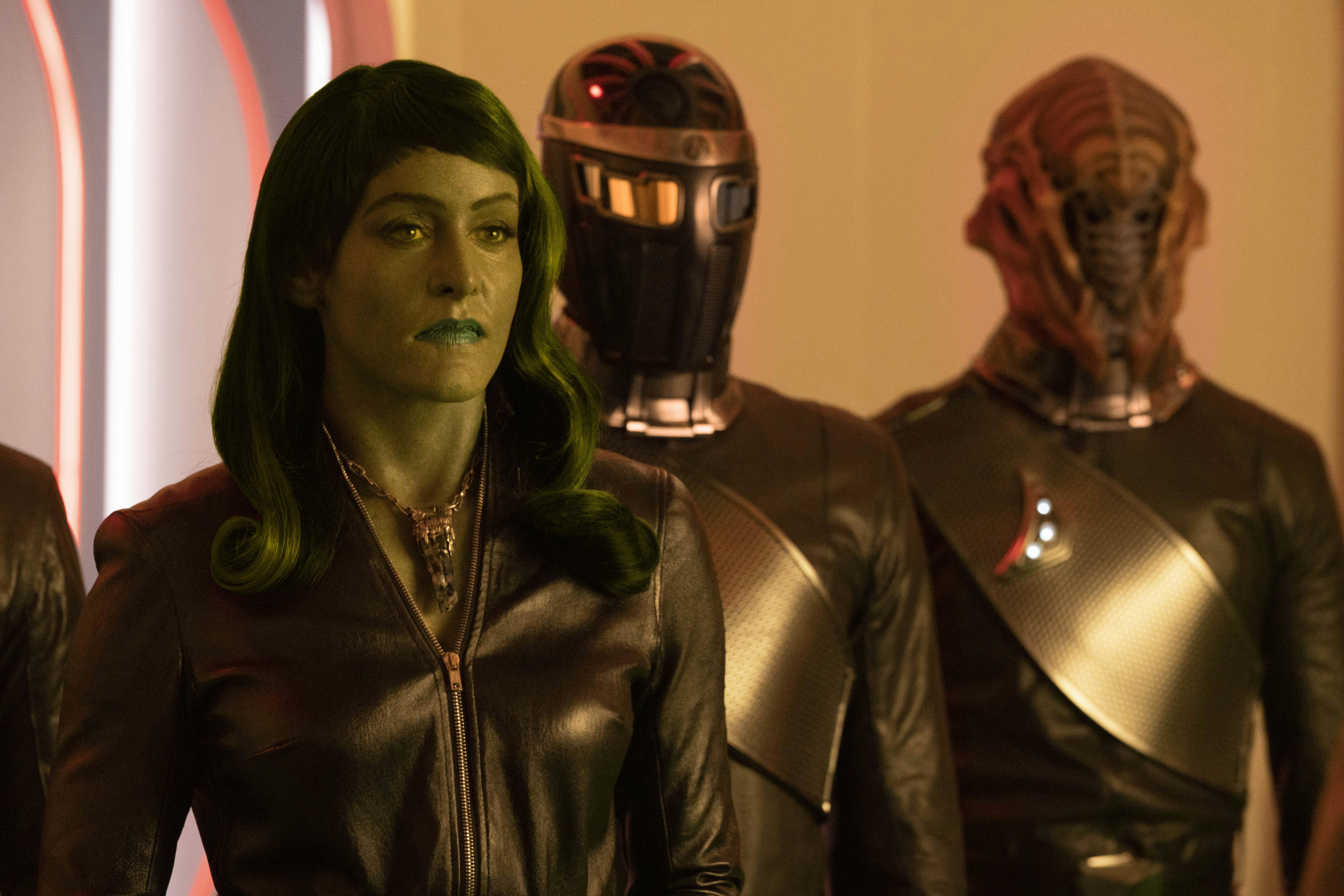
"There Is A Tide..."
StarTrek.com
As for the Emerald Chain, served as its minister and top official, but there was also a congressional body from whom the Orion woman gathered political support. When Osyraa proposed unifying the Chain and the Federation in 3189, she explained that the concessions in the armistice had required her to use much of her political capital. While featuring a more conventional style of leadership than the Dominion, the Emerald Chain still relied heavily upon Osyraa's will and reputation. Upon Osyraa's death, the Chain fell apart and paved the way for the Federation to make renewed diplomatic overtures to Trill and Ni'Var.
Interestingly, Section 31's attempt to wipe out the Founders with a disease would have probably resulted in a similar collapse of the Dominion.
Long-Term Goals
The Dominion as an entity was merely a tool for the Founders to ensure their survival and suppress the threat they believed the solids posed. By establishing order over known space, no one could persecute or pursue them.
In the Gamma Quadrant, the Dominion conquered who they wished, absorbing worlds into their society and placing them under the authority of the Vorta and Jem'Hadar. By defeating Starfleet, the Dominion hoped to do the same with the Federation, Klingon Empire, and other local powers. However, when the Cardassian population turned against them, the Dominion demonstrated that it was also willing to completely eradicate its enemies. The Vorta Weyoun even pointed out that, should the Dominion occupy the Federation, that Earth would need to be destroyed so as to avoid any uprisings.
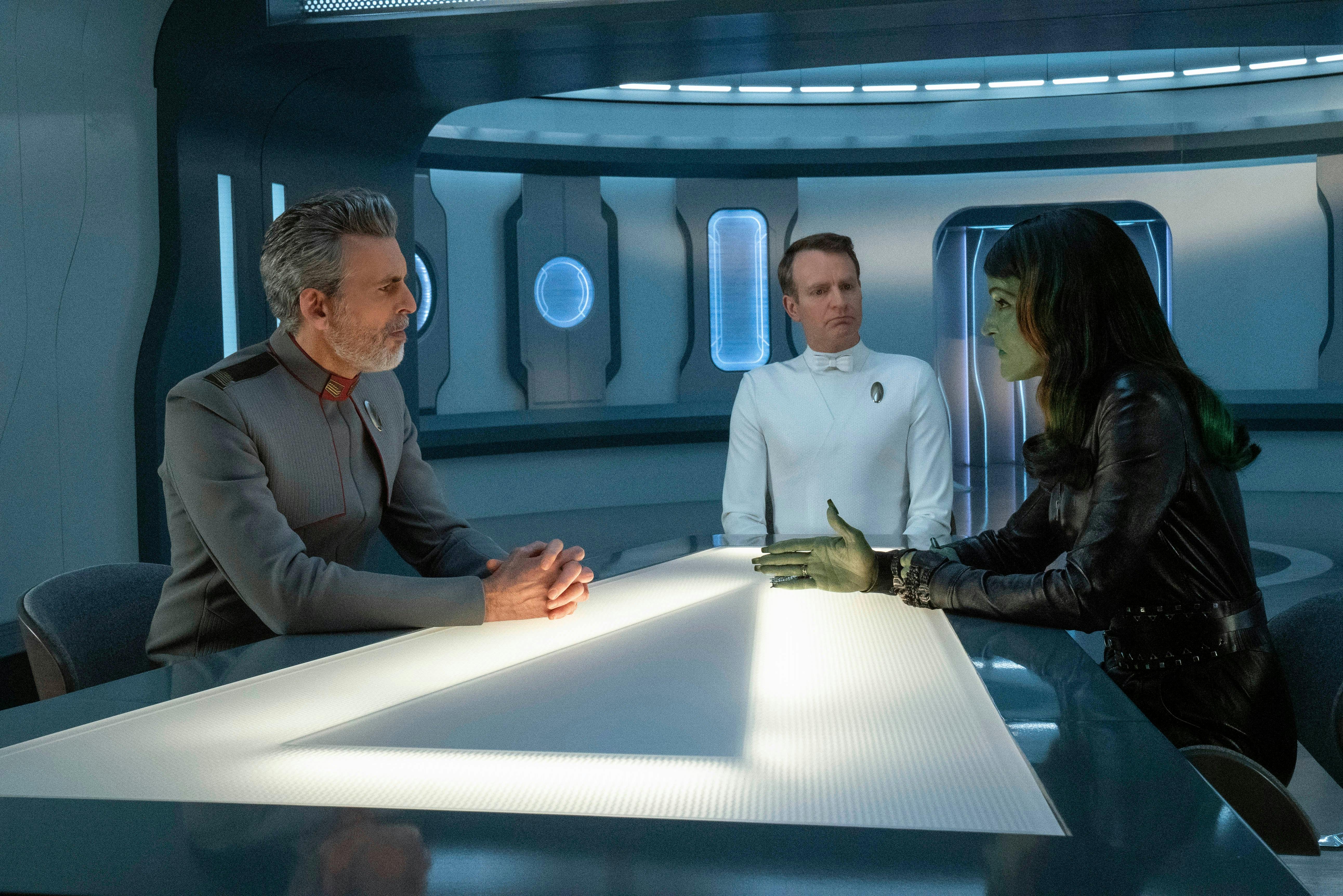
"There Is A Tide..."
StarTrek.com
The Emerald Chain took a more traditional approach, viewing the acquisition of resources as a means to increase its stature and tighten its grip on the sectors it controlled. Preferring to envision themselves as capitalists rather than Dominion-like conquerors, the post-Burn scarcity of dilithium ranked as another crucial contrast, as this severely limited the scope of the Chain's operations, ultimately prompting the Chain to willingly engage the Federation in peace talks. Unlike the Dominion, the Chain wished to merge with the Federation via treaty, harnessing the best attributes of each government to form a new Federation. Nevertheless, once Admiral Vance declined the offer, Osyraa grabbed a page from the Dominion's playbook and vowed to crush the Federation.
Internal Structures
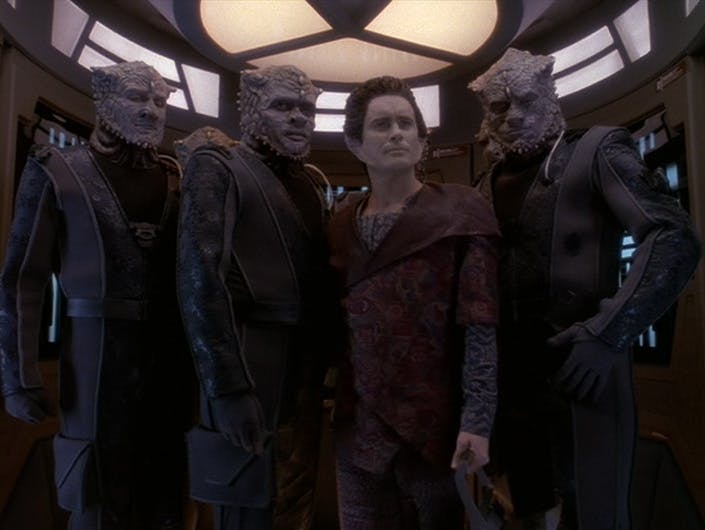
"To the Death"
StarTrek.com
The Dominion's structure was clear and concise — the will of the Founders would be followed by all, with the Vorta handling political, economic, and military plans and the Jem'Hadar enforcing the Vorta's policies with ruthless efficiency. Genetic engineering and programming maintained prominence in this balance, as the Founders ensured loyalty by cloning Vorta and breeding Jem'Hadar who were designed to obey the shapeshifters on every occasion. The Founders also created ketracel white, a drug the Jem'Hadar needed to survive that could only be dispensed to them by the Vorta.
Some civilizations within the Dominion, such as the Dosi and Karemma, were given the privilege of conducting trade with outsiders, but they still answered to the Vorta. The Alpha Quadrant presented a fresh challenge for the Dominion, as it initially made in-roads by allying with the Cardassian Union and signing non-aggression pacts with the Romulans, Tholians, Bajorans, and Miradorn. Once the war with the Federation began and the Dominion was cut off from its reinforcements from the Gamma Quadrant, the Dominion dealt with the problem by permitting the Cardassians, and later , to fight alongside the Jem'Hadar.
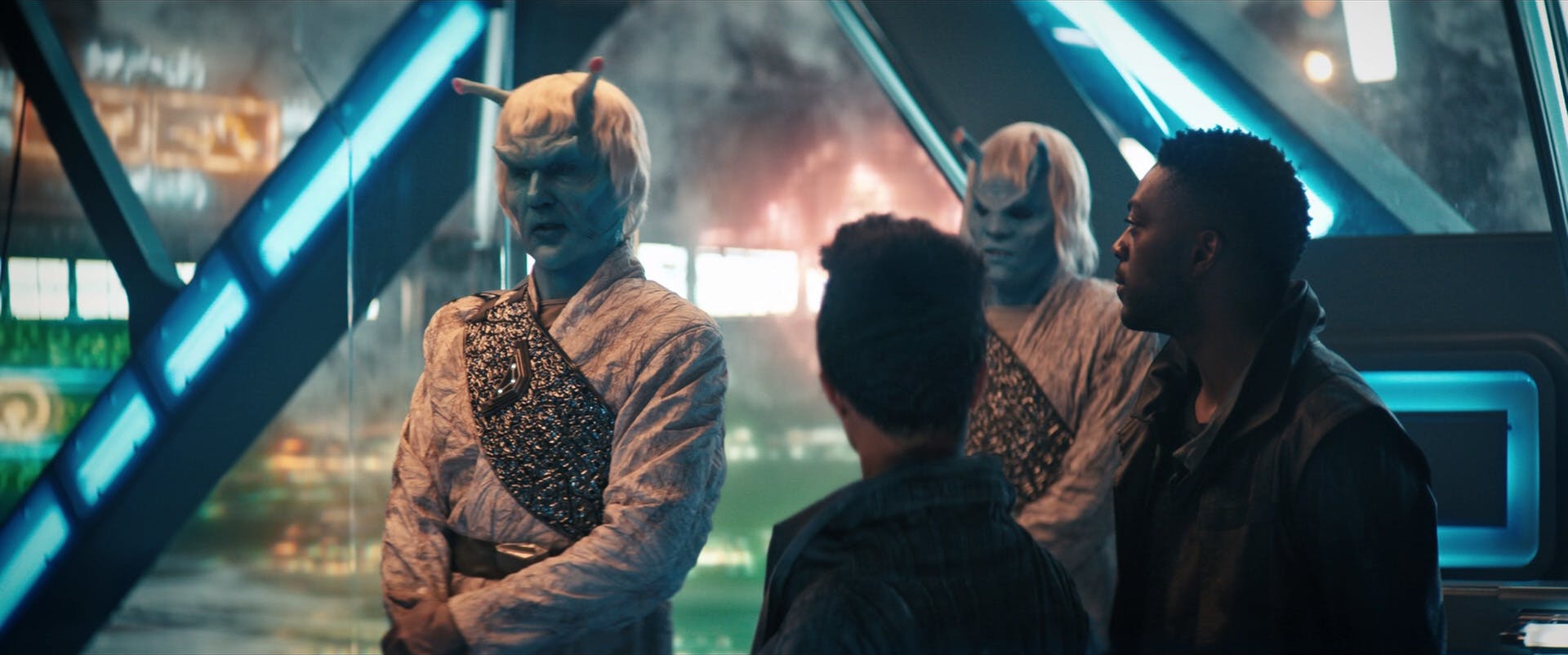
"That Hope Is You, Part 1"
StarTrek.com
The Emerald Chain also had a hierarchy, but, while Orions and Andorians acted as the driving force behind the government, there were also humans, Lurians, Cardassians, and other species who functioned in various roles for the Chain, whether it be in the congress, as couriers, or guards at the mercantile exchanges and labor camps. One such courier, a human known as Zareh, oversaw regulators who imposed Osyraa's will. Unlike the Dominion, who relied on the Vorta and Jem'Hadar they created, the Chain enslaved people from civilizations throughout their territory and forced them to work in salvage yards on Osyraa's behalf.
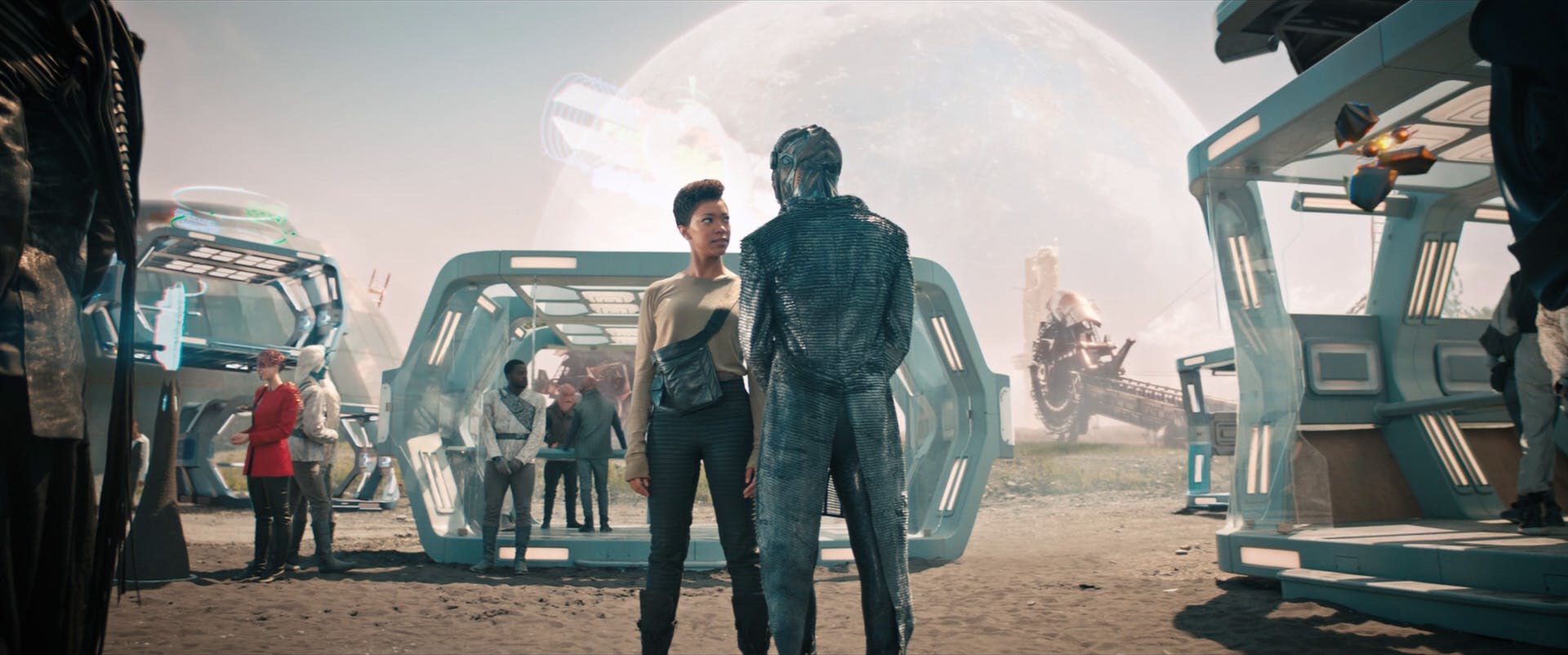
"People of Earth"
StarTrek.com
On the other hand, Admiral Vance seemed to have a great deal of respect for the average citizens who lived in Emerald Chain space. While we did not get to see much of this in 's third season, the presence of the scientist known as Aurellio might explain why Vance carried hope for a potential union between the two powers. A gentle soul who wished to use his knowledge and expertise to benefit the galaxy, Aurellio wanted to study the U.S.S. Discovery-A's spore drive so that it could be reproduced and distributed to free the galaxy from the yoke of dilithium. Distant Federation starbases chose to occasionally trade with couriers and mercantile exchanges, and the Chain's congress was willing to abolish slavery as part of its armistice with the Federation. This indicated that elements within the Emerald Chain's leadership structure were open to change.
Strategies & Tactics
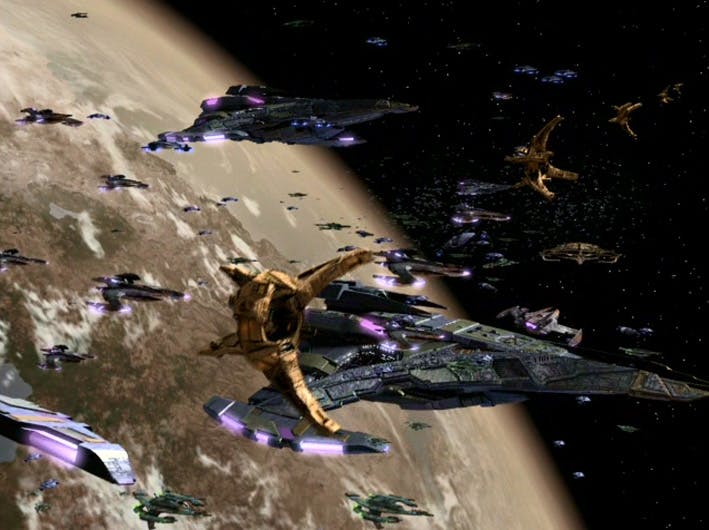
"What You Leave Behind"
StarTrek.com
The area in which the Dominion and Emerald Chain parallel each other quite closely would have certainly been their strategies and tactics. While open to diplomacy in some cases, such as with the Dominion's non-aggression pacts and the Chain's proposal to the Federation, the two entities relied on their military might and other cruel tactics to expand their territories, gather resources, and further their respective goals that were outlined above. Jem'Hadar warships demonstrated no qualms about violating the Alpha Quadrant's borders with their starships, while Emerald Chain vessels frequently conducted exercises near locations that included the Sigma Draconis system, Argeth, Kaminar, and other areas outside of their own space.
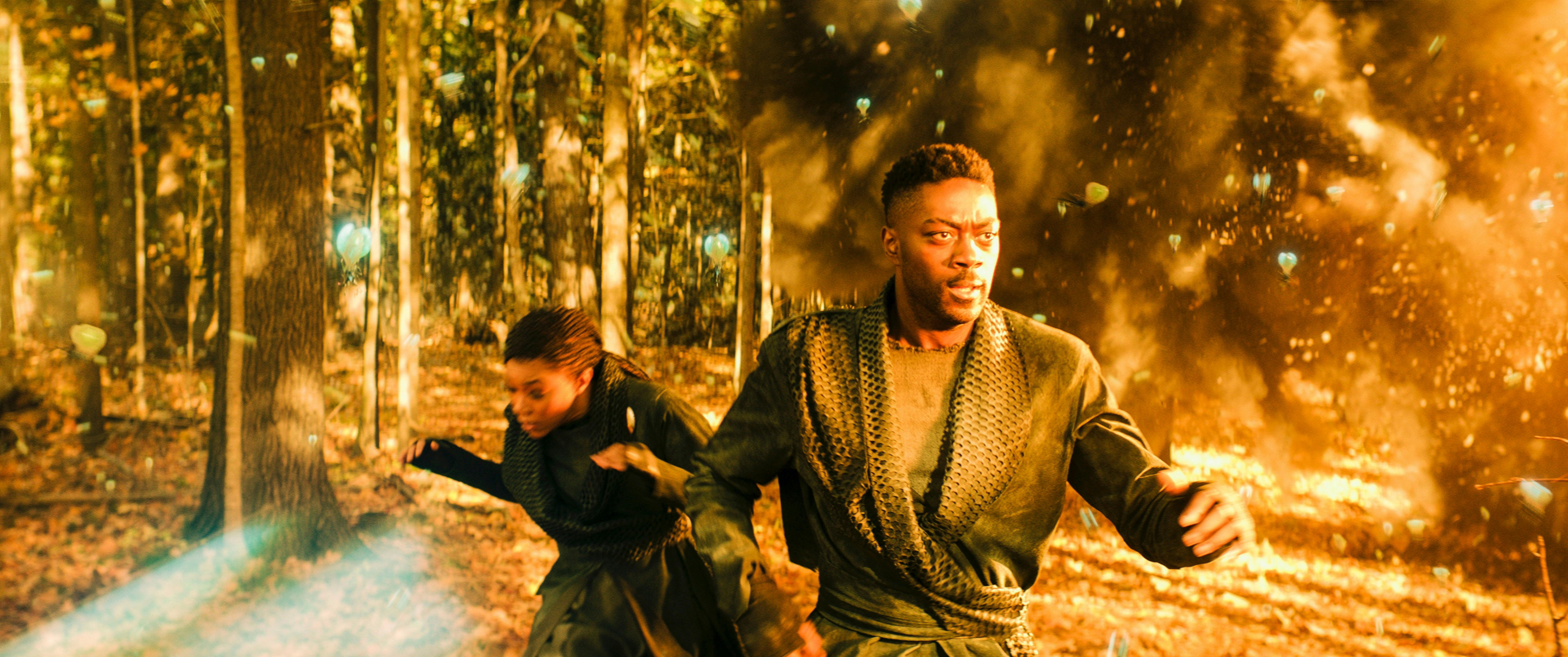
"The Sanctuary"
StarTrek.com
The Dominion and Emerald Chain relied on their technological prowess to punish those who resisted. After laying waste to the Teplan homeworld, the Dominion infected the population with a deadly blight as a way to punish them for their disobedience. Similarly, Osyraa exchanged a special repellant that could prevent sea locusts from eating Kwejian's harvests for profitable trance worms. When Kwejian wouldn't immediately hand over Cleveland "Book" Booker and Michael Burnham to her, Osyraa threatened Kwejian with starvation by withholding the repellant while simultaneously opening fire on the planet with the intent of burning its precious forests.
Conclusion
Breaking down the Dominion and Emerald Chain's leadership structures and values has unearthed both important contrasts and startling similarities. Each posed a hazard to the Federation, but those perils reflected the time periods in which the conflicts occurred. The post-Burn hardships weakened both the Chain and the Federation, setting up a peaceful resolution as a possible outcome, whereas the vast armadas fielded by the Dominion and the Federation in the 24th Century meant that both sides operated from positions of strength.
Despite parallels that ranged from strong leaders to brutal tactics, it is safe to say that the Dominion and Emerald Chain were, for the most part, distinctly disparate Federation foes. In fact, the Emerald Chain could almost be described as a bit of an amalgamation of the Dominion (military prowess and expansionist tendencies), the Federation (political compromises and scientific endeavors), and the Ferengi Alliance (commerce and profits) all rolled into one.





